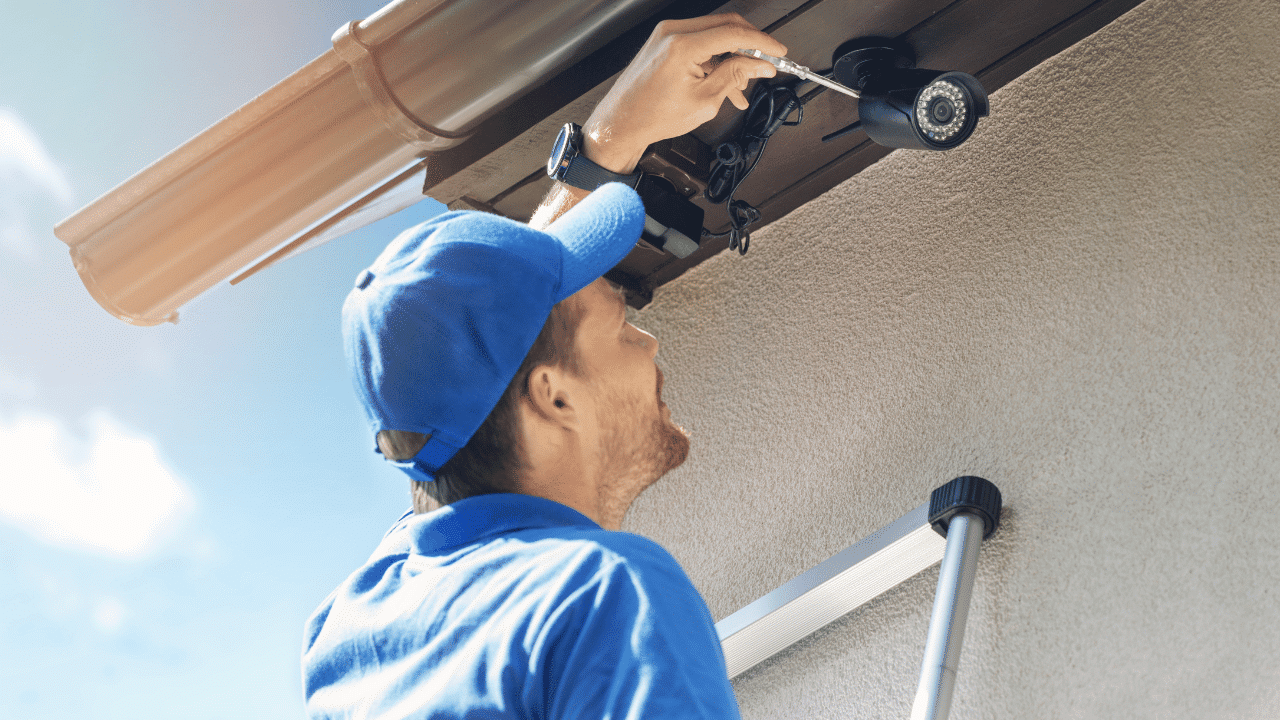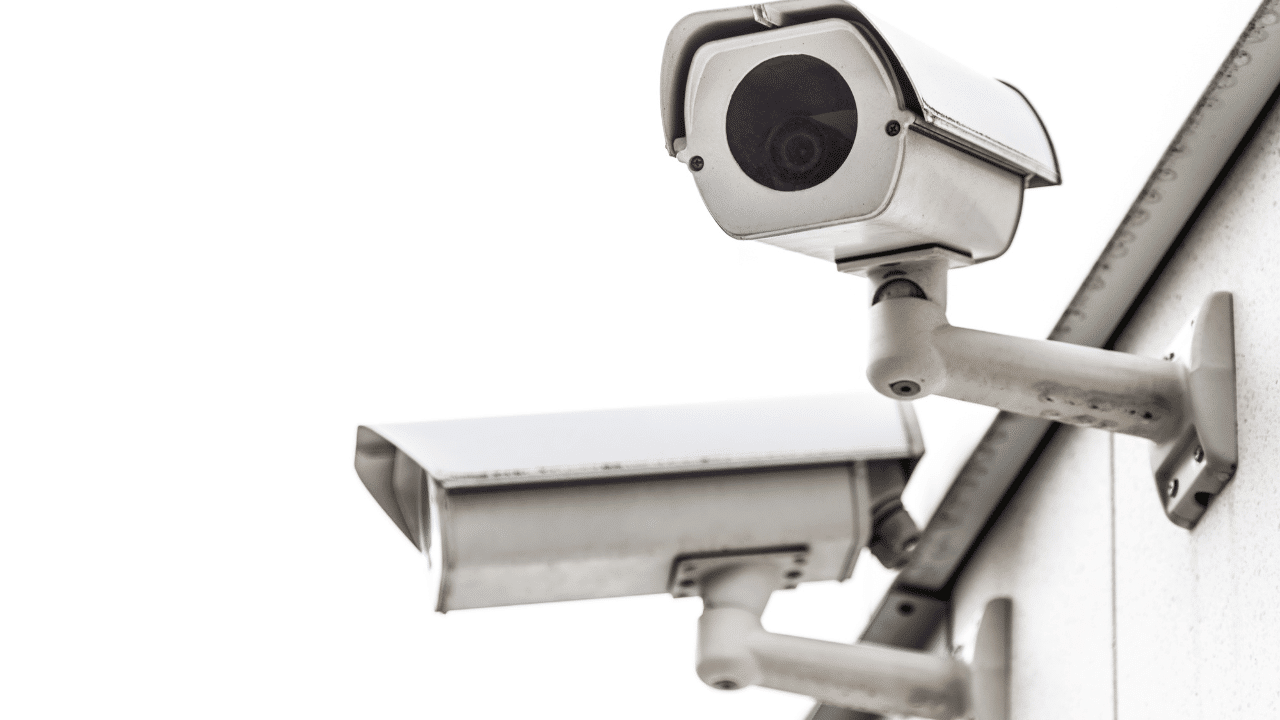Last Updated on September 11, 2023 by Pro Handyman Australia – Editorial Team
Security cameras can indeed play a pivotal role in influencing your home insurance premiums. Many insurance providers are inclined to offer discounts to homeowners who proactively enhance their home’s security through surveillance systems. Since these cameras can deter potential intruders, theft, vandalism, or other malicious activities, the risk of homeowners filing a claim is consequently reduced.
The Role of Surveillance in Premium Reduction
A well-surveilled home offers more than just peace of mind. Insurance companies interpret the presence of security cameras as a strategic step by homeowners to minimize property damage or loss risks. As a result, having these protective measures can translate into potential premium savings.
Determining Factors for Discounts
The discount magnitude that insurance companies offer often depends on various factors. These include the nature of the cameras used, their coverage breadth, professional monitoring involvement, and how well they are integrated with other existing security systems in your home.
Steps to Unlock Potential Savings
To ensure that you leverage these insurance discounts, always notify your insurance provider about any new security installations, particularly surveillance cameras. They might ask for evidence like installation documents or a certification from the security firm to authenticate your claim.
Criteria for Security System Discounts
Insurance providers might also set certain criteria for your security system to be eligible for discounts. Essential features that often catch their attention include cameras with high-definition video capabilities, remote monitoring options, and the system’s seamless integration with other security apparatus.
It’s always recommended to familiarize yourself with your insurance policy and actively engage in discussions with your insurance provider. This will help you gain insights into available discounts, stipulations in place, and the potential financial benefits of equipping your home with security cameras. While the monetary savings can fluctuate, the primary return on investment is an enhanced security blanket for your home and possibly trimmed-down insurance expenses.
The Rationale Behind Security-Related Discounts

The insurance industry primarily revolves around risk management. Companies have a vested interest in catering to clients who represent a lower risk. Studies indicate that properties equipped with video surveillance are less susceptible to break-ins compared to those without. This subsequently means fewer claims related to loss or damages. When fewer claims are made, it’s not just homeowners who benefit; insurance companies save money too.
Properties safeguarded by alarms and advanced IP security cameras are perceived as high-risk targets by potential intruders. This perception acts as a deterrent, given the heightened chances of culprits being apprehended. A study by The Huffington Post highlighted that homes devoid of surveillance mechanisms are 300 times more vulnerable to intrusions. Such compelling statistics are undoubtedly appealing to insurance companies, mainly due to the potential reduction in costly claims.
Choosing the Right Security System: Does It Matter?
The sophistication of a security system can significantly influence the discounts offered by insurance providers. Systems incorporating the latest industry advancements tend to be favored. Features such as DIY installation, integration of multiple base units, state-of-the-art voice controls, and advanced monitoring capabilities are a few sought-after aspects. Renowned equipment suppliers offer systems loaded with these innovative functionalities. Investing in a comprehensive security setup not only amplifies safety but also makes homeowners more appealing to insurance firms, paving the way for attractive discounts.
Potential Savings from Security Installations
The quantum of discounts that homeowners can avail by integrating security systems depends on multiple variables. While the nature of the security apparatus stands out as a key determinant, other elements like the property’s location, its dimensions, and specific policy stipulations also come into play. As per data from MSN Money, insurance providers typically extend discounts in the range of five to 20 percent to clients with secured properties. Factoring in the individual policy specifics, homeowners might witness savings that counterbalance or even surpass the monthly fees for monitoring their security equipment.
The Connection between Home Security Systems and Insurance Rates

Modern Home Security: A Boon for Homeowners
The adage, “a man’s home is his castle,” may evoke imagery of grand fortresses with guards on constant vigil, but for most residents in Ontario, this isn’t a reality. Instead, modern home security systems have become the metaphorical guards of our contemporary castles. These systems not only act as a protective barrier against unforeseen incidents but can also provide financial relief in the form of discounts on your home insurance rates.
Benefits Beyond Protection
A home security system offers several advantages, not just in terms of safety but also in financial terms:
1. Reducing Risk Increases Savings: With a home security system, there’s a clear message to insurance providers that homeowners are proactive about the safety of their property. Surprisingly, as revealed by a 2016 Environics Research survey, while 69% of Canadians acknowledge the benefits of a home security system, about 40% were unaware that such a system could lead to reduced home insurance rates.
2. Advanced Features Get Noticed: Modern security systems go beyond just burglary alarms. Some systems offer functionalities like remote garage door control, thermostat adjustments, and video recording of the premises. These added features not only give homeowners more control over their property but also get positive attention from insurance companies.
3. Trusting Relationships with Insurance Providers: When insurance companies notice the efforts homeowners make to secure their properties, it often leads to a more trusting relationship. Given the reduced likelihood of a security breach, insurers often perceive less risk, which can translate to lowered insurance premiums.
Potential Savings on Insurance Rates
It’s essential to understand that savings derived from installing a home security system can vary. Insurance companies consider several factors, including the system’s quality, past claims, property location, and the ongoing rates. Typically, homeowners might enjoy a discount ranging from 5% to 20% on their insurance premiums. However, homeowners boasting state-of-the-art systems are usually the ones to bag the higher discounts. A rudimentary, DIY security measure (think of the makeshift traps from the movie “Home Alone”) might not fetch the desired reductions.
There are various security systems available that cater to the criteria set by insurance companies, all the while being budget-friendly.
Making the Right Move
Before committing to any home security system, it’s advisable to consult with your insurance provider. Understand the potential savings you might enjoy based on the type of system you’re considering. Remember, even if the monthly cost of a high-tech security system marginally exceeds the discount on your premium, the peace of mind and added protection it offers can be invaluable. Investing in a robust security system is not just about potential insurance savings; it’s about safeguarding your home, belongings, and loved ones.
Decoding the Monthly Costs of a Home Security System

Factors Influencing Your Monthly Costs
The monthly expenditure on a home security system isn’t a fixed sum; rather, it’s influenced by a multitude of elements:
- Installation Fees: Often, these are a one-time expense encompassed within the initial month’s payment.
- Monitoring Preferences: Costs can vary depending on whether you opt to self-monitor the surveillance equipment and recordings or decide to have your provider do the monitoring.
- Enhanced Surveillance Equipment: If you choose to upgrade your security system with advanced equipment or added functionalities, such as intrusion sensors and remote access, this can influence the monthly fees.
- Choice of Plan: Providers usually offer a range of surveillance packages, allowing you to select one that aligns with your security requirements and financial plan.
Advanced Features: Boosting Security and Reducing Costs
Some security features not only elevate the safety quotient of your home but also pave the way for potential savings:
- Smoke Alarms and Flood Detectors: Integrating smoke alarms and water leak detectors with your security system ensures enhanced safety for your loved ones and possessions. This proactive approach is often appreciated by insurance companies, potentially leading to reduced premiums.
- Centrally Monitored Security (CMS): With a CMS, there’s the assurance of round-the-clock surveillance of your property. Immediate alerts in case of any breaches and the prompt involvement of security personnel during emergencies amplify the safety factor. Such continuous monitoring can often be a factor for insurance companies to consider when setting your premium.
- Video Surveillance: Real-time video monitoring allows homeowners to maintain a vigilant eye over their property. This not only acts as a deterrent for potential intruders but can also be invaluable when lodging insurance claims pertaining to theft or vandalism. Additionally, when synced with smartphones or other devices, this feature can keep you informed about the comings and goings at your property, ensuring the safety of family members and even checking on pets during your absence.
Optimize Safety and Savings
The primary goal of a home security system is to ensure the well-being of your family and property. However, the added advantage is the potential to enjoy reduced insurance premiums. Engage with your insurance provider to understand how these and other security enhancements can lead to cost-effective home insurance solutions.
Leveraging CCTV for Smart Homes: Securing Your Residence & Enjoying Insurance Discounts
In an age of rapid technological advancement and an ever-increasing emphasis on security, equipping your smart home with a Closed-Circuit Television (CCTV) system has evolved from being a mere luxury to a necessity. Beyond the primary benefits of enhancing safety and security, homeowners are now discovering a delightful financial incentive: insurance discounts. In this comprehensive blog post, we will delve into why integrating a CCTV into your smart home setup is not just a wise decision for safety but also a shrewd move for your finances.

1. The Rising Importance of Home Security in the Digital Age
Before we delve into the meat of the topic, it’s essential to understand the backdrop. With urbanization and the hustle and bustle of modern life, homeowners are more often than not away from their homes. This absence, coupled with the visible signs of affluence like a smart home setup, can make residences a potential target for burglars. CCTV systems act as a formidable deterrent in such scenarios.
A. Deterring Criminal Activities
The mere presence of surveillance cameras has been shown to discourage potential intruders. Criminals typically scout for easy targets – homes where they can slip in and out unnoticed. A visible security measure like CCTV increases the risks associated with the crime, making your home a less appealing target.
B. Round-the-Clock Surveillance
Unlike traditional security measures that rely on physical presence, CCTV systems offer 24/7 surveillance. This continuous monitoring ensures that every corner of your property is watched over, even during times when you’re away or asleep.
2. Smart Homes & Their Unique Vulnerabilities
Smart homes, equipped with interconnected devices, offer unparalleled convenience. From remotely controlling your thermostat to checking who’s at your door via your smartphone, smart homes are undeniably futuristic. However, with great power comes great responsibility. These interconnected systems can be vulnerable to cyber-attacks, and while a CCTV might not prevent a digital breach, they can monitor physical movements, ensuring no unauthorized person exploits a potential digital weakness to gain physical access.
3. Insurance Discounts: The Cherry on Top
While the safety benefits of CCTV systems are evident, many homeowners remain unaware of the potential financial benefits they can avail from insurance providers.
A. Reduced Risk Equals Reduced Premiums
At its core, the insurance industry revolves around risk assessment. Homes equipped with security measures like CCTV are statistically less likely to be burgled, leading to fewer claims. Consequently, insurance providers often reward such homeowners with reduced premiums, recognizing the minimized risk associated with insuring the property.
B. Demonstrating Proactiveness
Installing a CCTV system signals to insurance providers that you are proactive about your home’s security. This proactive stance can lead to a more favorable assessment when determining insurance premiums, leading to cost savings in the long run.
4. Making the Right CCTV Choice for Maximum Benefits
All CCTV systems are not created equal. To maximize both security benefits and potential insurance discounts:
A. Opt for Systems with Remote Monitoring
Modern CCTV systems allow homeowners to monitor their property in real-time via smartphones or computers. This feature not only enhances security but is also viewed favorably by insurance providers.
B. Integrate Motion Detection and Alerts
CCTVs equipped with motion detection can send real-time alerts in case of any unauthorized movement, ensuring prompt action if required.
5. The Road Ahead: An Integrated Smart Home Ecosystem
The future of home security isn’t just about isolated devices but an integrated ecosystem. Imagine a setup where your CCTV communicates with your smart lighting system to deter potential intruders or where your surveillance system, upon detecting unauthorized access, can automatically alert local law enforcement. Such integrations can further drive down risks, leading to even more significant insurance discounts.
As we progress further into the 21st century, the lines between physical and digital security continue to blur. In such a landscape, a comprehensive security approach that integrates CCTV systems into smart homes is not just a recommendation but a necessity. And when this necessity can also lead to financial savings through insurance discounts, it’s an opportunity too good to ignore.
Optimizing Home Security: The Best Places to Install Your Security Cameras
As homeowners increasingly recognize the importance of home security, the market has responded with an abundance of security camera options. While having a top-notch security camera is essential, its efficacy is significantly influenced by its placement. Proper camera positioning can be the difference between catching an intruder in the act and missing them entirely. In this comprehensive blog post, we will guide you through the strategic placements of security cameras to maximize the safety of your home.

1. Understand the Primary Objective
Before diving into specific placement recommendations, it’s crucial to define the primary goal of your security system. Are you aiming to deter potential intruders, capture evidence of any illicit activities, or merely monitor the daily happenings around your home? Answering this question will shape the subsequent camera placement strategy.
2. Front Door: The Main Entry Point
A. Why It’s Essential
The front door is one of the most common entry points for intruders. Moreover, it’s also where package deliveries, guests, and other daily activities occur.
B. Placement Tips
- Position the camera at a second-floor level to prevent tampering.
- If a second-floor placement isn’t possible, consider using a mesh wire protection or a camera with a vandal-proof protective cover.
- Ensure the camera has a clear view of anyone approaching the door but is also discreet enough not to be easily noticeable.
3. Back & Side Doors: Don’t Neglect Secondary Entrances
Many homeowners focus solely on the front door, forgetting that back and side doors are also potential entry points.
Placement Tips
- Similar to the front door, position these cameras elevated and out of easy reach.
- Angle them in a way that captures the yard or side alley, offering a broader view of the surroundings.
4. Windows Not Facing the Street
Windows that do not face the street are prime targets since they offer intruders more privacy to gain access.
Placement Tips
- Position cameras to monitor off-street windows in secluded areas of your home.
- Consider using cameras with motion detection to conserve energy and storage.
5. Driveway & Garage: More Than Just Car Safety
While primarily used to keep an eye on vehicles, driveways and garages can also be access points or staging areas for potential burglars.
Placement Tips
- Opt for wide-angle cameras that can cover a larger portion of the driveway or garage.
- Ensure cameras are weatherproof if they’re exposed to the elements.
6. Common Interior Spaces: Living Room, Hallways, and Staircases
Monitoring common areas inside the house can provide evidence if an intruder gets inside or can help keep an eye on household members and pets.
Placement Tips
- Use corner placements to maximize room coverage.
- Consider cameras with night vision capabilities, especially in areas that aren’t well-lit during nighttime.
7. Backyard & Garden: Protecting External Assets
Backyards and gardens can house valuable items like garden tools, grills, and recreational equipment.
Placement Tips
- Use cameras with robust weatherproofing.
- Ensure the camera has a wide-enough range to cover large open areas.
8. Basements: The Often Overlooked Entry Point
Basements, especially those with access doors or windows, can be an inviting target.
Placement Tips
- If the basement has windows, ensure they are covered by camera surveillance.
- For basements with external doors, treat them with the same level of security as other external doors.
9. Smart Placement Strategies
A. High Ground Advantage
Always try to place cameras higher up, looking down. This provides a broader view and places cameras out of easy reach.
B. Avoid Backlighting
Ensure cameras are not facing direct light sources, as this can hinder visibility.
C. Blend with Decor
For indoor cameras, consider the aesthetics. Cameras that blend with the home decor are less obtrusive and more pleasing to the eye.
Strategically positioning security cameras is as crucial as owning them. By covering all potential access points and commonly used areas, you can create a robust security system that not only deters potential intruders but also offers peace of mind. Remember, the best security setups combine both the quality of equipment and the thoughtfulness of placement.
Conclusion

In today’s digitally-driven world, the fusion of home security cameras and insurance is a natural evolution in enhancing residential protection. The sophisticated advancements in surveillance technology not only fortify our homes against potential intrusions but also carve out a symbiotic relationship with insurance providers. As security cameras become increasingly ubiquitous, they’ve started playing a pivotal role in dictating insurance premiums, reflecting the tangible value they add in mitigating risks. Homeowners who invest in these security measures are often rewarded with financial incentives, illustrating the insurance industry’s acknowledgment of their effectiveness. However, beyond the fiscal advantages, lies the invaluable peace of mind knowing that one’s sanctuary is monitored and safeguarded. The interplay between home security cameras and insurance underscores a harmonious alliance where both safety and savings coalesce, setting a precedent for future innovations in the realm of home protection.
